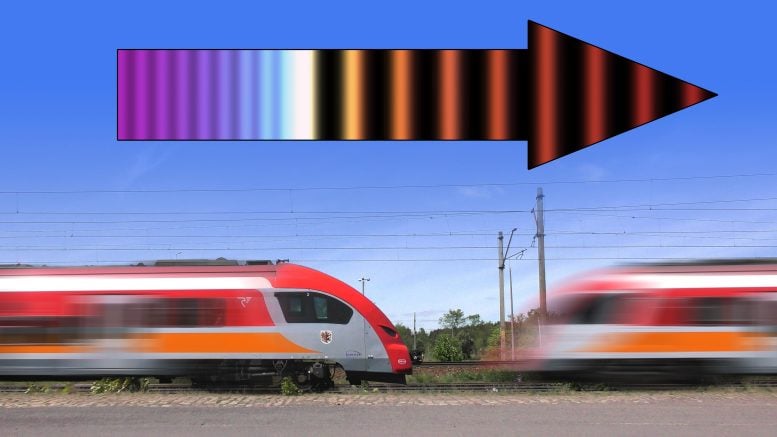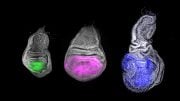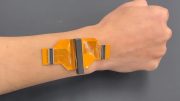
Researchers from the Institute of Nuclear Physics in Cracow have applied the Doppler effect and the telegraph equation to explore heat transport in complex systems like biological tissues. Their findings suggest that heat transport can exhibit wave-like behaviors, potentially revolutionizing medical and cosmetic procedures by improving heat management techniques. Credit: SciTechDaily
Physicists have linked the Doppler effect to heat transport, suggesting wave-like properties in biological tissues, with implications for medical and cosmetic technologies.
When a train approaches or an ambulance with its siren blaring nears us, we hear the sound with an increased frequency, which gradually decreases. As it passes, the frequency changes abruptly to a lower one, then decreases further. This commonly encountered phenomenon, known as the Doppler effect, can offer valuable insights into a seemingly unrelated field: heat transport.
The Physics of Heat Transport
Although burns are painful for everyone, they inflict a unique type of pain on physicists. In addition to the physical pain, they have yet to determine the precise mechanism governing heat transport in complex systems like biological tissue. Is it diffusion, associated with the spread of initially clustered molecules, or are acoustics-like wave phenomena responsible?
In a new study, published in the International Journal of Heat and Mass Transfer, theorists from the Institute of Nuclear Physics of the Polish Academy of Sciences in Cracow have explored this question using the telegraph equation and the Doppler effect, familiar concepts from everyday life.

The Doppler effect can be heard particularly clearly when a train passes by. The presence of the same effect in the generalized telegraph equation indicates the wave nature of heat transport over small distances. Credit: IFJ PAN
Telegraph Equation and Wave Motion
Wave motion is described by an equation called the wave equation. However, as telegraph technology advanced in the late 19th century, it became clear that this equation required modification to accurately depict the transmission of Morse code messages. These modifications needed to take into account the attenuation of the current flowing through the medium in which it propagates, i.e. through the telegraph cable. With telecommunications in mind, the telegraph equation was then developed to describe how electric current propagates with attenuation along one spatial dimension.
“In recent years, the skilfully generalized telegraph equation has found a new application: it has also started to be used to describe phenomena related to diffusion or heat transport. This fact spurred us on to pose an intriguing question,” says Dr. Katarzyna Gorska (IFJ PAN). “In solutions of the wave equation, i.e. without damping, the Doppler effect occurs. This is a typical wave phenomenon. But does it also occur in solutions of telegraph equations related to heat transport? If so, we would have an excellent indication that, at least from the theoretical point of view, there is no reason to believe that in systems with damping – for example, in biological tissue – heat flow could not be treated as a wave phenomenon.”
The Doppler Effect in Physics
The classical Doppler effect is the apparent change in the frequency of waves emitted by a source moving relative to an observer. When the distance between the source and the observer decreases, the maxima and minima of the emitted waves reach the receiver more frequently than when the distance between the source and the observer increases. In the case of sound waves, we can clearly hear that the sound of an approaching train or the siren of a fast-approaching ambulance have noticeably higher frequencies than when these vehicles are moving away from us.
Prof. Andrzej Horzela of IFJ PAN explains: “The Doppler phenomenon occurs in wave equations, which we say are local. We understand local here in that there is no delay between action and reaction. The principles of mechanics, for example, are local – a change in the resultant force acting on a body immediately results in a change in its acceleration. However, we all know that we can pick up a hot cup and before we feel it burning, a second or two passes. The phenomenon exhibits a certain delay; we say it is non-local, in other words smeared in time. Do we therefore see the Doppler effect in the generalized telegraph equation describing time-smeared systems?”
Mathematical Challenges and Innovations
Addressing this question is challenging due to the mathematical complexity of the generalized telegraph equation, where derivatives and integrals occur simultaneously. However, the Cracow physicists demonstrated that solutions of the generalized telegraph equation can be constructed from much simpler solutions of the local equation using a procedure known as subordination. Subordination replaces complex physical time in equations with a simpler intrinsic time through a specific function reflecting temporal non-locality. This simplification allows for the derivation of solutions to the equations.
“In our approach, subordination consists of replacing uniformly elapsing physical time, in which the equations are complicated, with a certain intrinsic time associated with physical time, which we do through an appropriate function containing information about the temporal non-locality of the process. This procedure simplifies the equations into a form that makes it possible to find their solutions,” says co-author of the paper Tobiasz Pietrzak, M.Sc, a student at the Cracow Interdisciplinary Doctoral School, whose work was funded by a Preludium Bis grant from the Polish National Science Centre.
Results and Implications
Solutions of the ordinary telegraph equation show features typical of the Doppler effect. They show the presence of a clear, sharp frequency inflection, corresponding to the moment when the source passes the observer and there is an instantaneous, abrupt change in the pitch of the sound recorded by the observer. Analogous behavior was observed by the Cracow physicists in the solutions of the generalized equation.
It seems, therefore, that the Doppler effect is a fundamental feature of wave motion. However, that is not all. In the physical world, every wave has its wavefront, which, somewhat simplified, can be identified with its beginning and end. When we look at the front of the wave (and therefore its wavefront), the Doppler shift is easy to see. It turns out that changes in wave frequency due to changes in the distance between the observer and the source also occur for waves that do not show the existence of a wavefront, e.g. defined over an unlimited area.
Research into the wave aspects of heat propagation may seem like a very abstract consideration, but its translation into everyday practice seems quite real. Physicists from the IPJ PAN point out that the knowledge they have gained can be used, in particular, in situations where the transport of heat over short distances is involved. Examples include medical applications, where a better understanding of heat transport mechanisms may allow for the development of safer techniques for working with laser surgical instruments or finding a method to remove excess heat from burnt tissues more efficiently than before. Cosmetology, interested in minimizing unwanted thermal effects occurring during cosmetic procedures, may also benefit.
Reference: “The generalized telegraph equation with moving harmonic source: Solvability using the integral decomposition technique and wave aspects” by T. Pietrzak, A. Horzela and K. Górska, 12 March 2024, International Journal of Heat and Mass Transfer.
DOI: 10.1016/j.ijheatmasstransfer.2024.125373









Research into the wave aspects of heat propagation is a very abstract consideration, but its translation into everyday practice is quite real. That’s based on the superposition and deflection of space-time vortices are the basis for the formation and propagation of heat waves. Physics must have a correct understanding of the differences and commonalities between mathematical probability and physical reality.
For observers, any observable physical phenomenon is the precise moment do the mathematical probabilities give over to physical reality.
————Extracted from https://zhuanlan.zhihu.com/p/697274113.
The article makes layman comparisons with acoustic waves ie. Sound. but we know that requires energy transfer between particles, so an experiment to eliminate particle transfer of energy to verify the effect discussed here is required to eliminate other mechanisms operating within biological tissue
The real equivalent of the Doppler effect in diffusive media is when the source is exponential decay, the received signal will be exponential decay with shorter decay time while moving towards (blue) and longer decay when moving away.